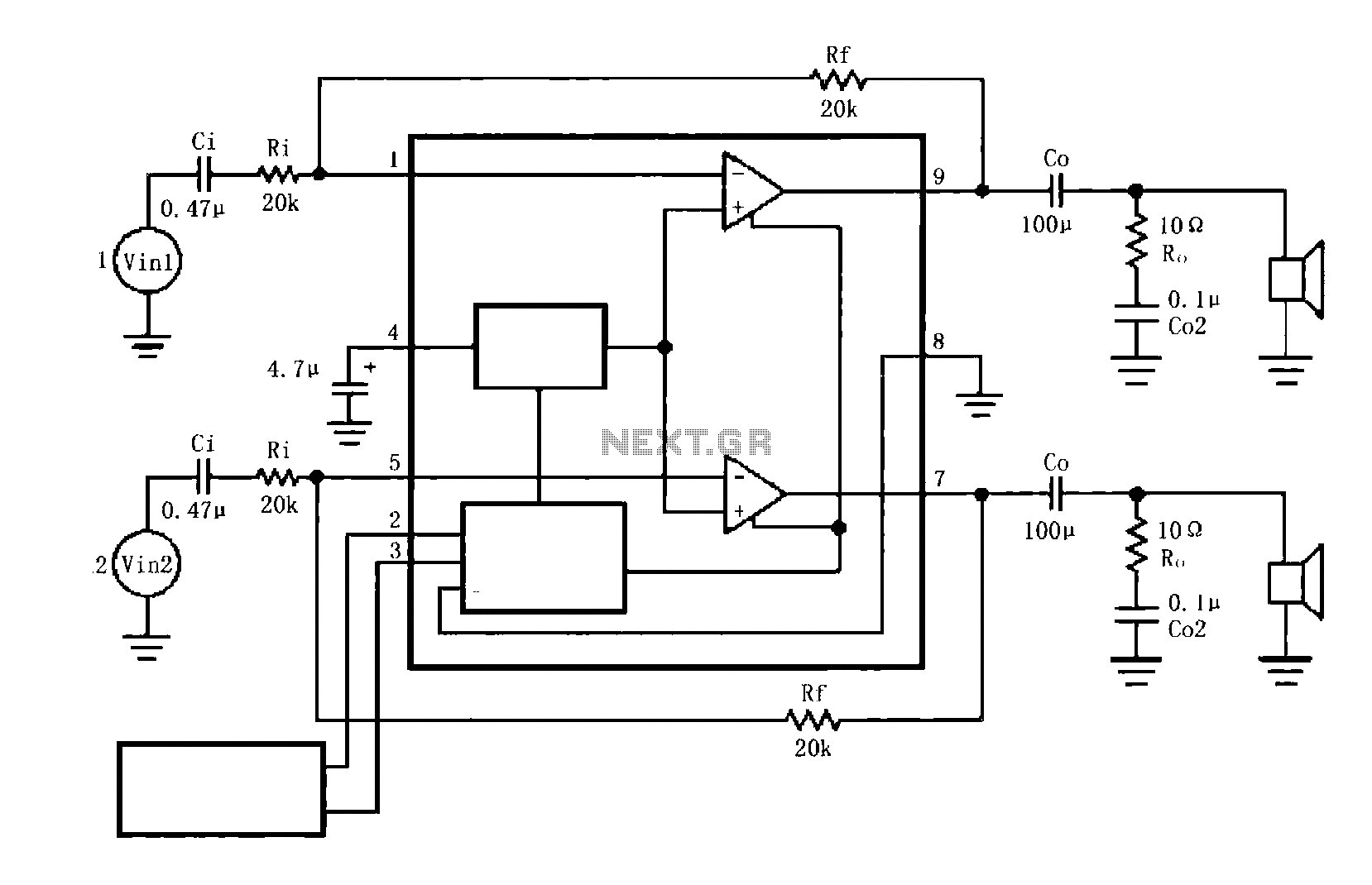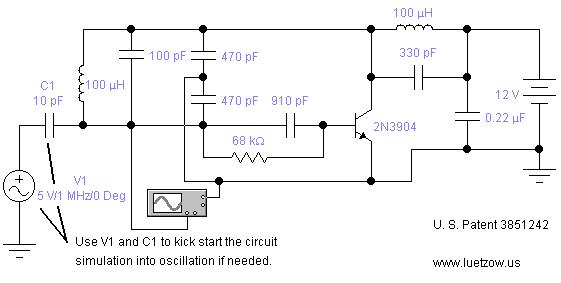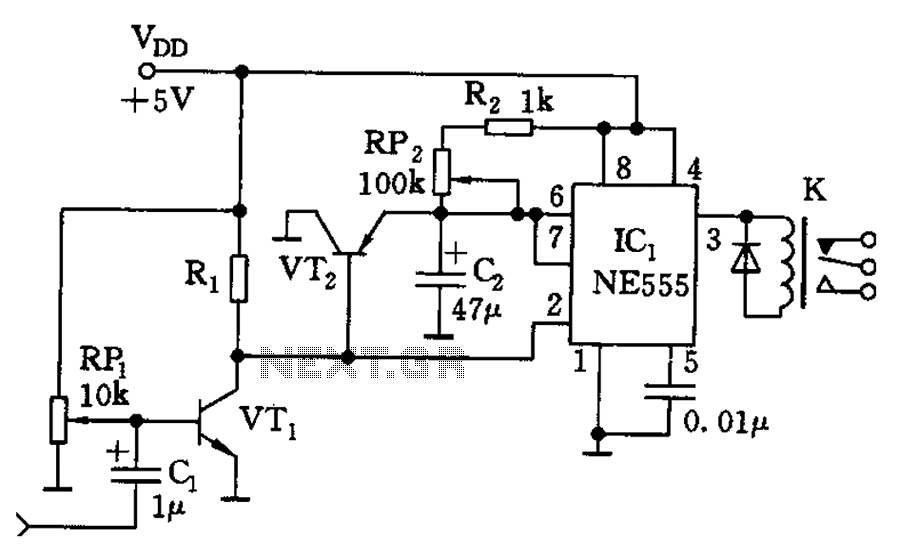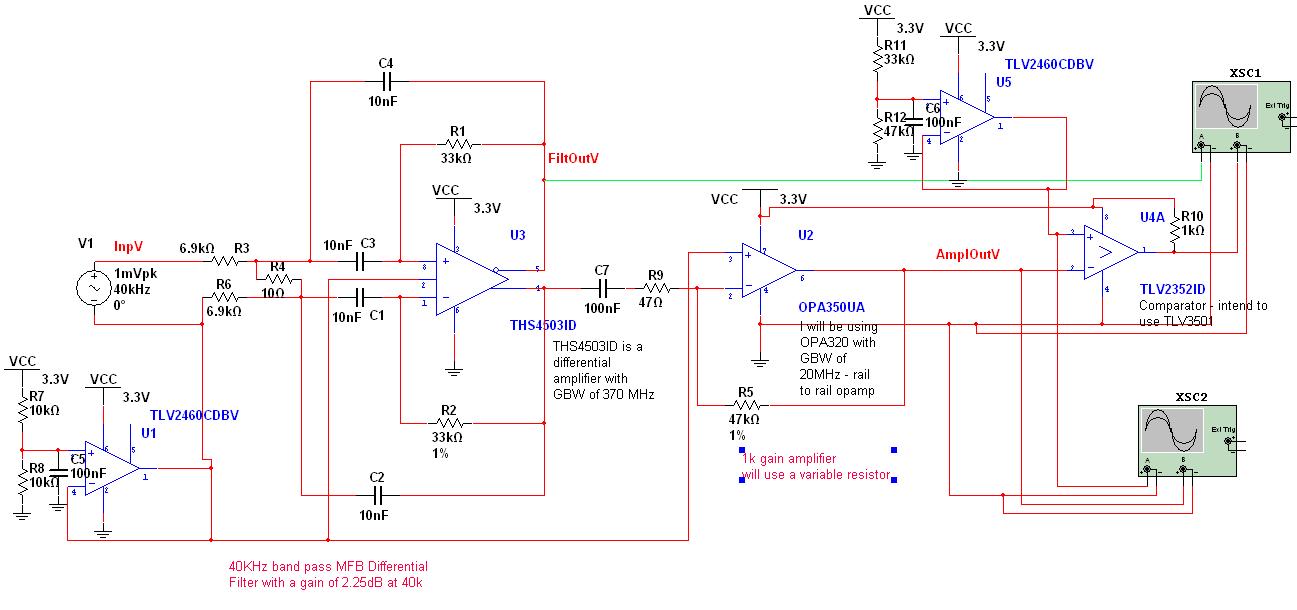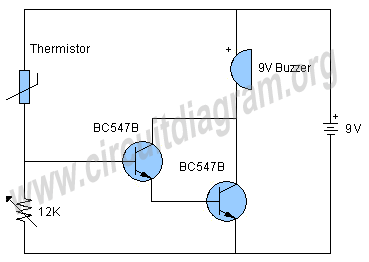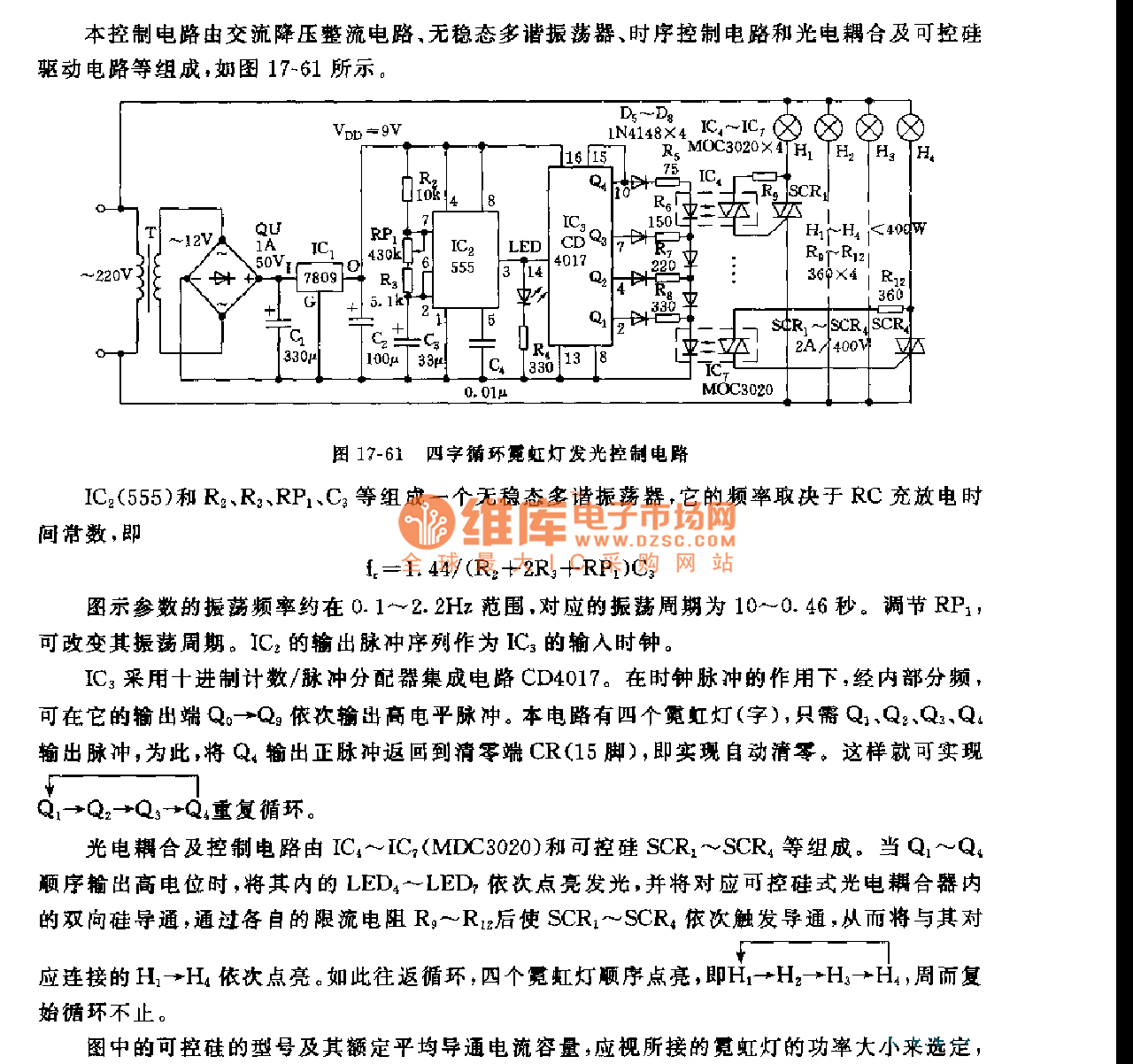
Power supply protection circuit
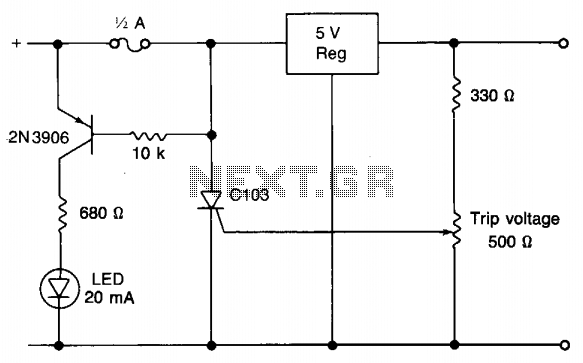
When utilizing a regulated power supply to decrease voltage, there exists a risk of component failure within the supply, potentially resulting in damage to connected equipment. While a fuse can provide protection against excessive current draw, it may not respond quickly enough to overvoltage scenarios. The specified values pertain to a 12 V supply being reduced to 5 V, with a trip voltage established at 5.7 V to safeguard equipment in the event of a regulator malfunction. A 330-ohm resistor and a 500-ohm potentiometer create a voltage divider that samples the output voltage, adjustable via the potentiometer. The silicon-controlled rectifier (SCR) is chosen to handle at least double the rating of the fuse. The full supply voltage is applied to the regulator's input. The 2N2906 transistor remains biased off due to the 10 kΩ resistor and the SCR, keeping the LED off. If the output voltage exceeds the predetermined trip value, the SCR will conduct, causing the fuse to blow, which in turn allows base current to flow to the 2N3906 through the 10 kΩ resistor, resulting in the LED illuminating.
In this circuit, the primary function is to ensure the protection of sensitive equipment from overvoltage conditions. The design includes a voltage regulator that steps down the input voltage from 12 V to a stable 5 V. The trip mechanism is critical; it is configured to activate at 5.7 V, slightly above the desired output voltage, providing a buffer to prevent damage to the load.
The voltage divider formed by the 330-ohm resistor and the 500-ohm potentiometer is essential for monitoring the output voltage. The adjustable potentiometer allows for fine-tuning of the voltage divider ratio, enabling precise voltage sampling. The output voltage is continuously monitored, and if it surpasses the trip voltage, the SCR becomes conductive, effectively shorting the fuse and causing it to blow. This action interrupts the circuit and protects the downstream components.
The 2N2906 transistor is utilized as a switch that is normally off, controlled by the SCR and the 10 kΩ resistor. The LED indicator serves as a visual alert, illuminating when the output voltage exceeds the safe threshold. The 2N3906 transistor acts as an additional control element, receiving base current when the SCR conducts, ensuring that the LED lights up to signal an overvoltage condition.
Overall, this circuit design exemplifies a robust approach to voltage regulation and overvoltage protection, combining passive and active components to create a reliable safeguard for electronic equipment.When using a regulated supply to reduce a supply voltage there is always the danger of component failure in the supply and consequent damage to the equipment. A fuse will protect when excess current is drawn, but might be too slow to cope with overvoltage conditions.
The values shown are for a 12 V supply being dropped to 5 V. The trip voltage is set to 5.7 V to protect the equipment in the event of a regulator fault. The 330 ohm resistor and the 500 ohm potentiometer form a potential divider which samples the output voltage as set by adjustment of the potentiometer. The SCR is selected to carry at least twice the fuse rating. The full supply voltage is connected to the input of the regulator. The 2N2906 is held bias off by the 10 k resistor and the SCR so that the LED is held off. If the output voltage rises above a set trip value then the SCR will conduct, the fuse will blow, and the 2N3906 will be supplied with base current via the 10 k resistor, and the LED will light up. 🔗 External reference
In this circuit, the primary function is to ensure the protection of sensitive equipment from overvoltage conditions. The design includes a voltage regulator that steps down the input voltage from 12 V to a stable 5 V. The trip mechanism is critical; it is configured to activate at 5.7 V, slightly above the desired output voltage, providing a buffer to prevent damage to the load.
The voltage divider formed by the 330-ohm resistor and the 500-ohm potentiometer is essential for monitoring the output voltage. The adjustable potentiometer allows for fine-tuning of the voltage divider ratio, enabling precise voltage sampling. The output voltage is continuously monitored, and if it surpasses the trip voltage, the SCR becomes conductive, effectively shorting the fuse and causing it to blow. This action interrupts the circuit and protects the downstream components.
The 2N2906 transistor is utilized as a switch that is normally off, controlled by the SCR and the 10 kΩ resistor. The LED indicator serves as a visual alert, illuminating when the output voltage exceeds the safe threshold. The 2N3906 transistor acts as an additional control element, receiving base current when the SCR conducts, ensuring that the LED lights up to signal an overvoltage condition.
Overall, this circuit design exemplifies a robust approach to voltage regulation and overvoltage protection, combining passive and active components to create a reliable safeguard for electronic equipment.When using a regulated supply to reduce a supply voltage there is always the danger of component failure in the supply and consequent damage to the equipment. A fuse will protect when excess current is drawn, but might be too slow to cope with overvoltage conditions.
The values shown are for a 12 V supply being dropped to 5 V. The trip voltage is set to 5.7 V to protect the equipment in the event of a regulator fault. The 330 ohm resistor and the 500 ohm potentiometer form a potential divider which samples the output voltage as set by adjustment of the potentiometer. The SCR is selected to carry at least twice the fuse rating. The full supply voltage is connected to the input of the regulator. The 2N2906 is held bias off by the 10 k resistor and the SCR so that the LED is held off. If the output voltage rises above a set trip value then the SCR will conduct, the fuse will blow, and the 2N3906 will be supplied with base current via the 10 k resistor, and the LED will light up. 🔗 External reference
